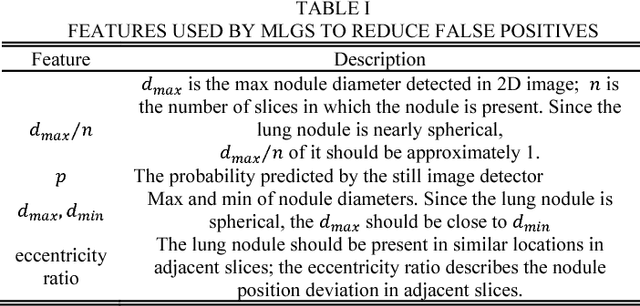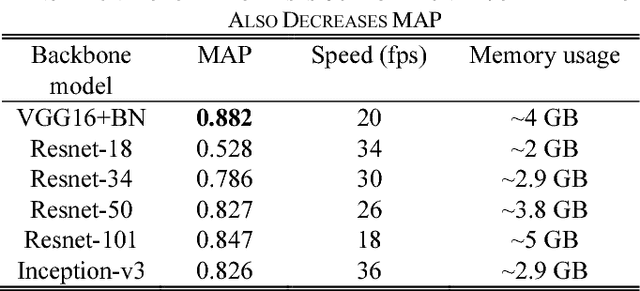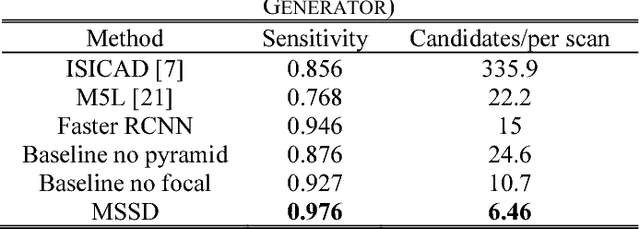Kungang Li
Detection and Attention: Diagnosing Pulmonary Lung Cancer from CT by Imitating Physicians
Dec 14, 2017



Abstract:This paper proposes a novel and efficient method to build a Computer-Aided Diagnoses (CAD) system for lung nodule detection based on Computed Tomography (CT). This task was treated as an Object Detection on Video (VID) problem by imitating how a radiologist reads CT scans. A lung nodule detector was trained to automatically learn nodule features from still images to detect lung nodule candidates with both high recall and accuracy. Unlike previous work which used 3-dimensional information around the nodule to reduce false positives, we propose two simple but efficient methods, Multi-slice propagation (MSP) and Motionless-guide suppression (MLGS), which analyze sequence information of CT scans to reduce false negatives and suppress false positives. We evaluated our method in open-source LUNA16 dataset which contains 888 CT scans, and obtained state-of-the-art result (Free-Response Receiver Operating Characteristic score of 0.892) with detection speed (end to end within 20 seconds per patient on a single NVidia GTX 1080) much higher than existing methods.
 Add to Chrome
Add to Chrome Add to Firefox
Add to Firefox Add to Edge
Add to Edge